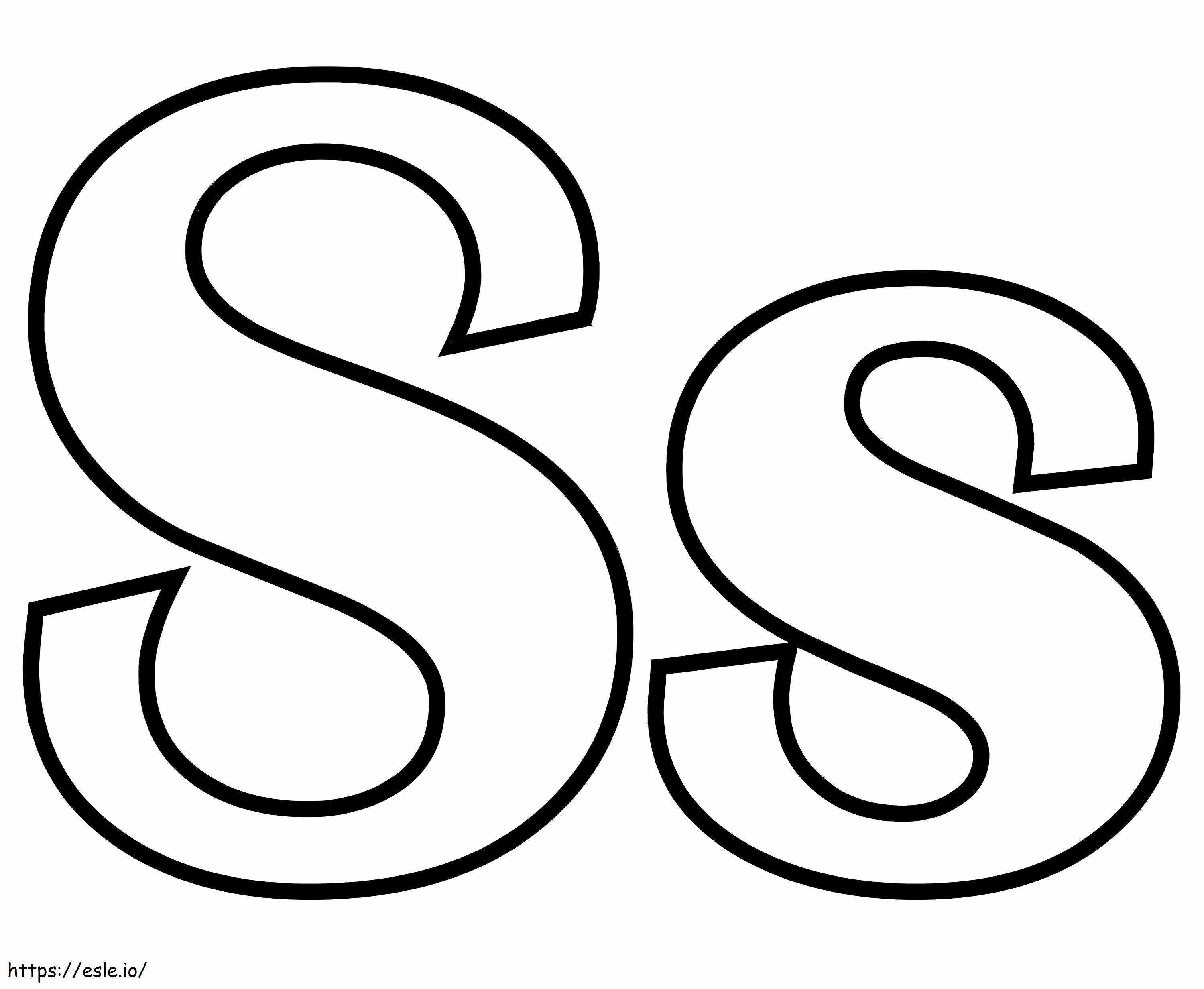From its role in shaping communication to its influence on technology and culture, "s" is more than just a letter or symbol. It represents a world of possibilities, connections, and meanings. Whether you're exploring its linguistic significance, its application in STEM fields, or its cultural impact, "s" has something to offer everyone. Dive into this article to uncover the fascinating layers of "s" and discover how it can transform the way you think and interact with the world.
As we delve deeper into the topic, you'll find that "s" is not just a standalone entity but a cornerstone of countless systems and ideas. Its versatility allows it to adapt to various contexts, from the simplicity of forming plurals in English to the complexity of algorithms in computer science. By understanding "s," you gain access to a broader perspective on how seemingly small elements can have a profound impact. This article will guide you through its multifaceted roles, ensuring you leave with a comprehensive understanding of its importance.
Our journey will take you through eight detailed sections, each designed to provide a unique perspective on "s." From answering burning questions like "What makes 's' so significant in language evolution?" to exploring its applications in technology and beyond, this guide is crafted to be both informative and engaging. So, buckle up and prepare to embark on an exploration of "s" that will leave you inspired and enlightened.
Read also:Everything You Need To Know About Hdmovie2 Hub A Comprehensive Guide
Table of Contents
- What Makes "S" So Significant in Language Evolution?
- How Does "S" Shape Our Daily Communication?
- The Role of "S" in Technology and Innovation
- Why Is "S" Crucial in Mathematics and Science?
- How Can "S" Influence Culture and Society?
- What Are the Common Misconceptions About "S"?
- How to Master the Use of "S" in Writing and Speaking
- Frequently Asked Questions About "S"
What Makes "S" So Significant in Language Evolution?
Language is a living entity, constantly evolving to meet the needs of its speakers. At the heart of this evolution lies "s," a letter that has played a pivotal role in shaping the way we communicate. Whether it's forming plurals, indicating possession, or adding a sense of continuity, "s" is a cornerstone of linguistic structure. Its simplicity belies its power, as it bridges gaps between words and ideas, enabling us to express complex thoughts with ease.
How Did "S" Become a Linguistic Powerhouse?
The journey of "s" in language is a fascinating one. Historically, "s" has been used to denote plurality, a function that dates back to Old English. For instance, adding an "s" to "cat" transforms it into "cats," instantly conveying the idea of more than one. This small yet mighty letter has also been instrumental in indicating possession, as seen in phrases like "John's book." Its versatility extends to verb conjugations, where "s" often marks the third-person singular form, as in "he runs." These examples highlight how "s" has adapted to the needs of language users over centuries.
Why Is "S" So Universally Adopted Across Languages?
One of the reasons "s" holds such significance is its universality. Many languages, from Spanish to French and beyond, use "s" to perform similar functions. This widespread adoption speaks to its efficiency and adaptability. For instance, in Spanish, "s" is used to form plurals and indicate gender, while in French, it often softens the pronunciation of words. The letter's ability to transcend linguistic barriers makes it a unifying force in global communication.
- Plurality: Adding "s" to nouns to indicate more than one.
- Possession: Using "s" to show ownership, as in "Mary's car."
- Verb Conjugation: Marking the third-person singular form with "s."
How Does "S" Shape Our Daily Communication?
Every day, we encounter "s" in countless forms, often without realizing its profound impact on our interactions. From casual conversations to formal writing, "s" plays a crucial role in shaping the clarity and flow of communication. Its ability to modify meaning with minimal effort makes it an indispensable tool in our linguistic arsenal.
What Are the Most Common Uses of "S" in Everyday Language?
In daily communication, "s" serves multiple purposes, each contributing to the richness of language. For instance, it helps us differentiate between singular and plural forms, such as "dog" versus "dogs." It also adds nuance to sentences by indicating possession, as in "the teacher's desk." Moreover, "s" is frequently used in contractions like "it's" or "he's," streamlining speech and writing. These functions ensure that "s" remains a vital component of effective communication.
How Does "S" Enhance Clarity and Precision in Writing?
When it comes to writing, "s" is a master of precision. By adding an "s" to a noun, we can instantly convey plurality, eliminating the need for additional words. Similarly, its role in indicating possession helps writers avoid ambiguity. For example, "Sarah's book" clearly specifies ownership, whereas omitting the "s" could lead to confusion. This clarity is essential for both casual and professional writing, ensuring that messages are conveyed accurately and efficiently.
Read also:Charissa Thompson The Journey Of A Versatile Sports Broadcaster And Media Personality
The Role of "S" in Technology and Innovation
In the realm of technology, "s" takes on a whole new dimension. From coding languages to algorithms, its presence is felt across various fields, driving innovation and progress. Understanding how "s" functions in this context can provide valuable insights into the digital world.
How Does "S" Contribute to the World of Programming?
In programming, "s" often appears as part of variable names, functions, and syntax. For instance, in Python, a variable named "scores" might store a list of numerical values. Similarly, in JavaScript, "s" could be used to denote strings or sequences. Its adaptability makes it a favorite among developers, who rely on its simplicity to create efficient and readable code.
Why Is "S" Essential in Algorithm Design?
When designing algorithms, "s" frequently represents sequences, sets, or systems. For example, in sorting algorithms, "s" might stand for a series of numbers to be organized. Its ability to encapsulate complex ideas in a single letter makes it an invaluable tool for problem-solving. By leveraging "s," developers can create solutions that are both elegant and effective.
Why Is "S" Crucial in Mathematics and Science?
Mathematics and science rely heavily on symbols and notations, and "s" is no exception. Whether it's representing speed, seconds, or systems, "s" is a fundamental element in these disciplines. Its presence ensures that complex concepts can be communicated with clarity and precision.
How Does "S" Simplify Complex Scientific Notations?
In physics, "s" often denotes seconds, a unit of time. This simple yet powerful symbol allows scientists to measure and describe phenomena with accuracy. Similarly, in mathematics, "s" might represent a variable or a set, enabling researchers to model and analyze data efficiently. Its role in simplifying notations cannot be overstated, as it bridges the gap between abstract ideas and practical applications.
What Are Some Real-World Applications of "S" in STEM?
From calculating speed to analyzing systems, "s" has numerous applications in STEM fields. For example, in engineering, "s" might represent a structural element, while in biology, it could denote a species. These applications highlight the versatility of "s," making it an indispensable tool for scientists and researchers worldwide.
How Can "S" Influence Culture and Society?
Beyond its technical applications, "s" also plays a significant role in shaping culture and society. From literature to social media, its presence is felt in ways that reflect our collective values and aspirations.
What Role Does "S" Play in Literature and Art?
In literature, "s" is often used to create rhythm and flow. Poets and writers leverage its sound to evoke emotions and convey meaning. For instance, alliteration involving "s" can add a musical quality to prose, enhancing its impact. Similarly, in visual art, "s" might appear in titles or descriptions, adding depth and context to the work.
How Does "S" Shape Social Media Trends?
On social media, "s" is a key player in hashtags, captions, and memes. Its ability to convey meaning quickly and succinctly makes it a favorite among users. For example, hashtags like #selfies or #sustainability rely on "s" to capture attention and spark conversations. This cultural phenomenon underscores the letter's influence in shaping modern communication.
What Are the Common Misconceptions About "S"?
Despite its widespread use, "s" is often misunderstood. These misconceptions can lead to errors in communication and hinder its effective use. By addressing these myths, we can gain a clearer understanding of "s" and its true potential.
Is "S" Always Used Correctly in Plurals?
One common misconception is that adding "s" always creates a plural. While this is true in many cases, exceptions exist. For example, words like "sheep" and "deer" do not change form in the plural. Similarly, irregular plurals like "children" or "mice" defy the standard "s" rule. Understanding these exceptions is crucial for accurate communication.
Does "S" Always Indicate Possession?
Another myth is that "s" always denotes possession. While it often does, as in "John's car," this is not always the case. For instance, in contractions like "it's," the "s" represents "is" rather than ownership. Recognizing these nuances ensures that "s" is used appropriately in various contexts.
How to Master the Use of "S" in Writing and Speaking
Mastering "s" requires practice and awareness. By understanding its functions and applications, you can enhance your communication skills and avoid common pitfalls.
What Are Some Tips for Using "S" Effectively?
To use "s" effectively, start by familiarizing yourself with its various roles. Practice forming plurals, indicating possession, and using contractions. Pay attention to exceptions and irregularities, and seek feedback to refine your skills. Over time, you'll develop a natural fluency that enhances your writing and speaking.
How Can You Avoid Common Mistakes with "S"?
Avoiding mistakes with "s" involves staying mindful of its context. Double-check plurals and possessives, and be cautious with contractions. Reading widely and observing how others use "s" can also provide valuable insights. By staying vigilant, you can ensure that "s" serves its intended purpose in your communication.
Frequently Asked Questions About "S"
Why Is "S" So Important in English?
"S" is crucial in English because it helps form plurals, indicate possession, and modify verbs. Its versatility makes it an essential component of the language, enabling speakers to convey complex ideas with ease.
Can "S" Be Used Differently in Other Languages?
Yes, "s" can have different functions in other languages. For example, in Spanish, it often denotes gender, while in French, it softens pronunciation. These variations highlight the adaptability of "s" across linguistic contexts.
How Can I Improve My Use of "S" in Writing?
To improve your use of "s," practice forming plurals, indicating possession, and using contractions. Read widely, seek feedback, and stay mindful of exceptions. Over time, you'll develop a natural fluency that enhances your writing.
Conclusion
In conclusion, "s" is a remarkable element that shapes

